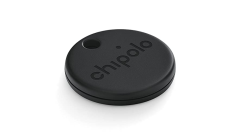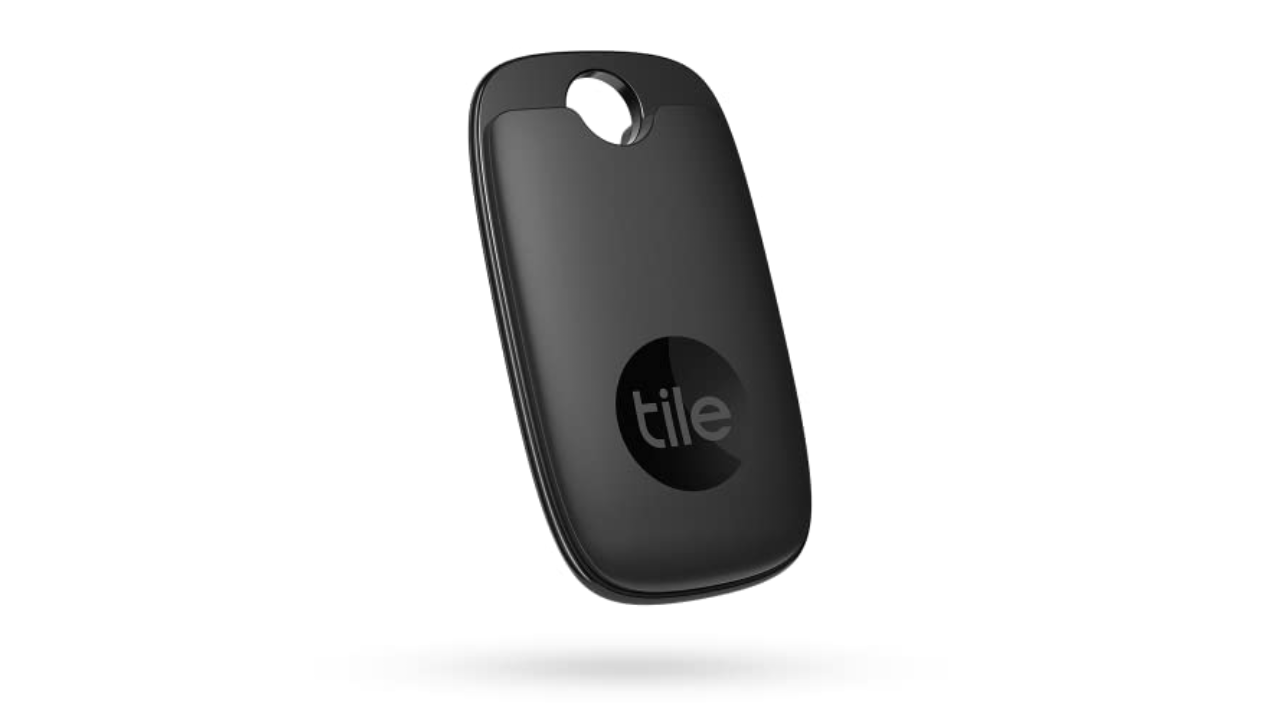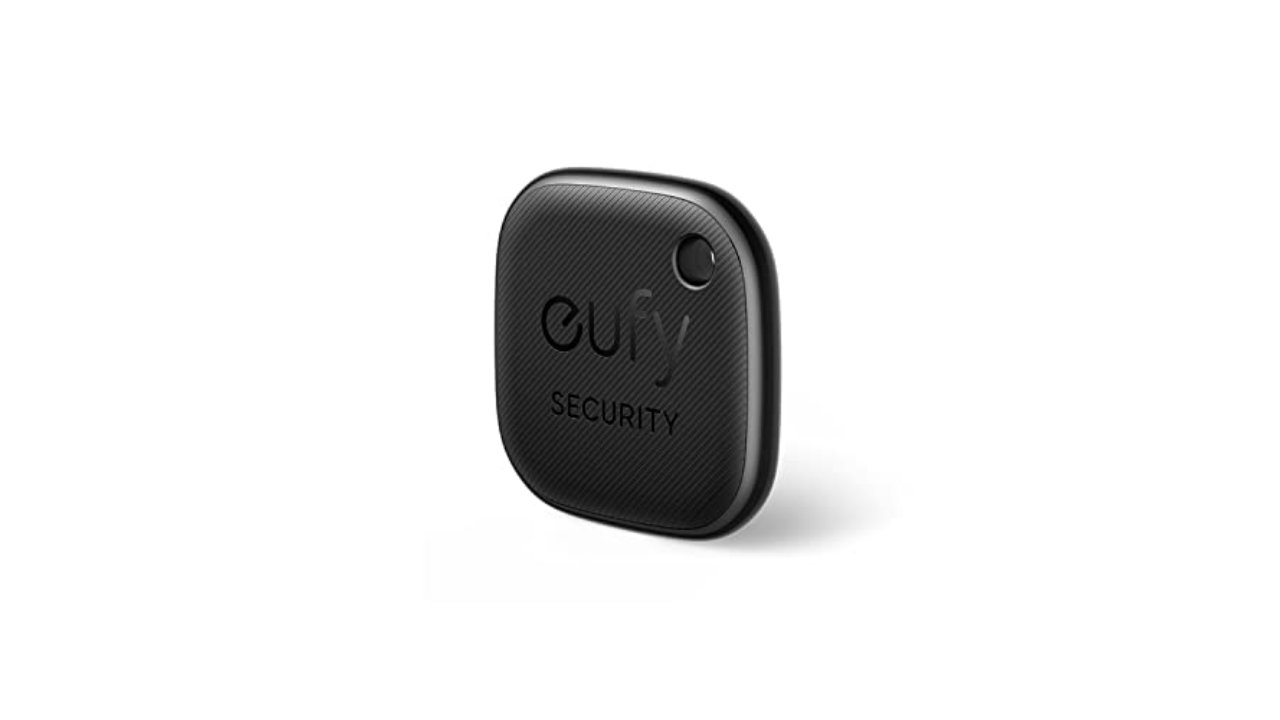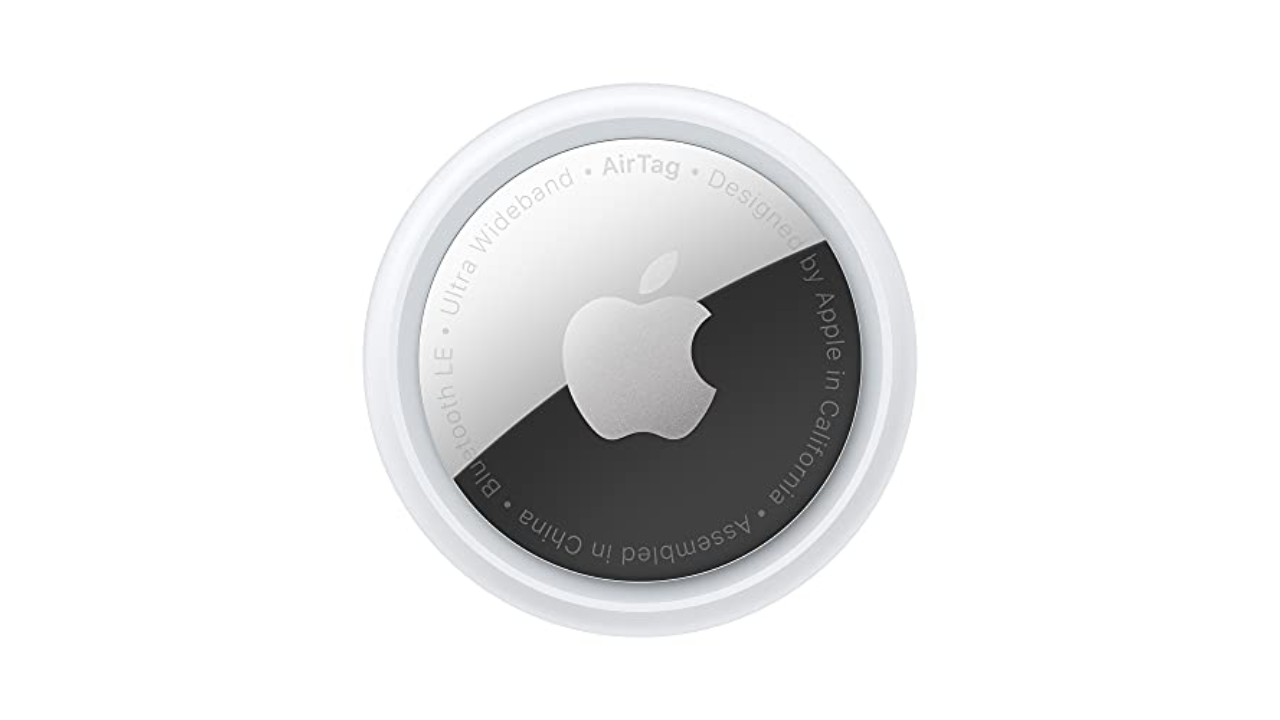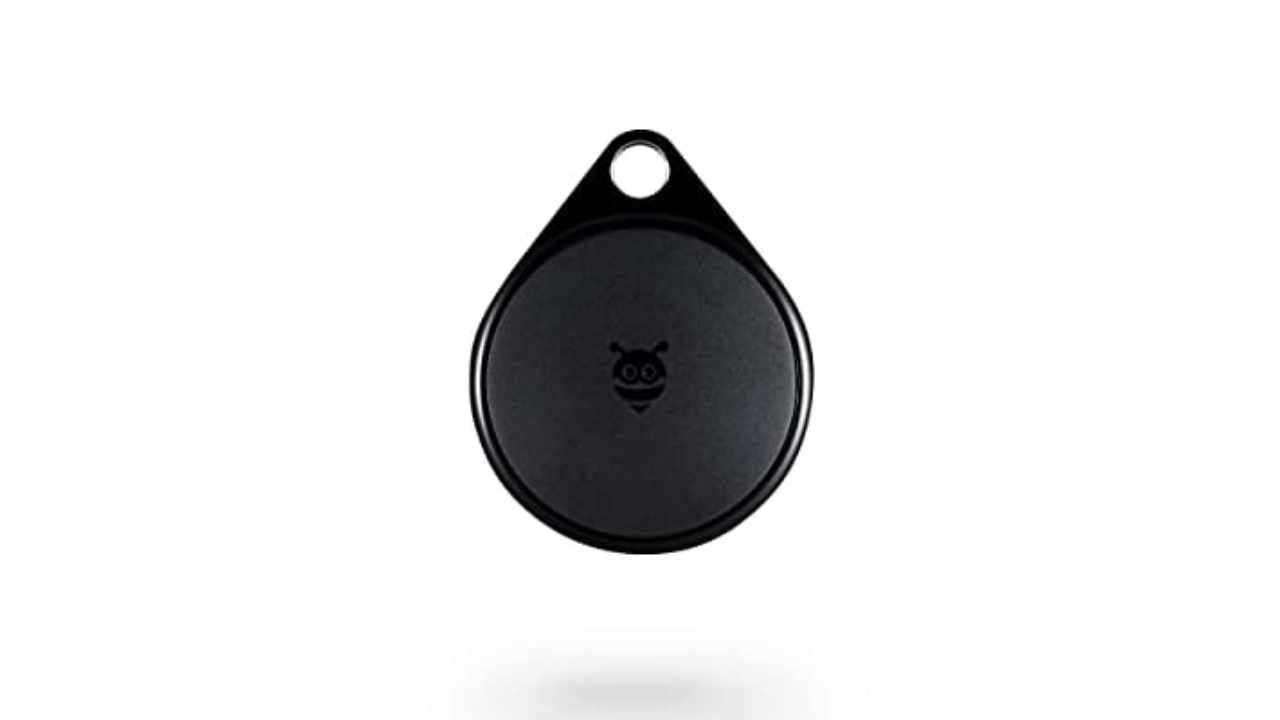The best Bluetooth trackers for finding lost stuff in 2024
Losing your keys is so 2023. End the hunt with these top-rated item trackers.
"WHERE. ARE. MY. KEYS?!" Few things in life cause more aggravation than lost stuff. Keys, phones, wallets, purses, luggage, pricey Stanley drink tumblers... when items like these go missing, a good day can turn sour in a hurry.
Tile Pro Bluetooth Tracker
Best tracker overall
Eufy Security SmartTrack Link
Best budget tracker
Apple AirTag
Best tracker for iPhone users
Chipolo One Spot
Best AirTag alternative
Pebblebee Clip Rechargeable Item Tracker
Best tracker for the hard of hearing
Technology to the rescue! With one of the best Bluetooth trackers attached to your possessions, you can minimize the hair-pulling. These little battery-powered gizmos link to your phone via Bluetooth; a tap is all it takes to make one beep if it's in range. And if it's not — it's currently making its way around town in that Uber, for example — you may be able to leverage a network of other users to help retrieve it.
Most of these devices are quite affordable, with prices ranging from $20 to $35, sometimes with discounts if you buy multiples. (Apple AirTags, for example, cost $29 individually but $99 in a pack of four — and sometimes as little as $79.) It's a small price to pay for a pretty huge convenience, to say nothing of peace of mind.
Read more: 6 surprising and creative ways to use your AirTags — like protecting your pet or prized Stanley cup
The question is, which tracker should you buy? I tested five offerings from Apple, Chipolo, Eufy, Pebblebee and Tile. (Samsung makes one as well, but was unable to provide a unit for testing.) At first blush, they all seem fairly similar, so you could be forgiven for feeling a little, well, lost.
Have no fear: I'll help you zero in on the trackers that are easiest to use and most effective at finding lost stuff. (You might be surprised to learn which ones fared best.) Be sure to keep reading after the reviews to learn more about range, privacy, my testing process and the differences between trackers for Android and iOS.
The best Bluetooth tracker for 2024
Battery: Replaceable CR2032 (up to 1 year) | Supports Apple Find My: No | Rated range: 400 feet | Ultra-wideband: No | LEDs: No
I've been a Tile user for years; until AirTags came along, I'd say it was the only worthwhile tracking game in town. Now there's quite a lot of competition — so am I sticking with Tile?
I am, because right now it comes closest to best-of-all-worlds tracking: two-way communication (phone-to-tracker and tracker-to-phone) and a sizable network of Tile users, which can help in locating a lost item. Granted, it's nowhere near the size of Apple's Find My network, but Tile is so confident in its effectiveness, you can get an item-reimbursement insurance policy (as part of an optional subscription).
Setup couldn't be simpler; the app walks you through the few required steps, ending with an appeal to subscribe to Tile Premium or Premium Protect. These plans, priced at $30 and $100 per year, respectively, include benefits like item reimbursement, smart alerts and free battery replacement.
I'm on the fence about these, because while item reimbursement offers peace of mind, compatible CR2032 batteries cost all of $6 for a 10-pack. Meanwhile, other trackers provide smart alerts (aka left-behind notifications) at no additional cost. If you're not sure a Premium plan is worth the money, Tile offers a 30-day free trial.
The Pro is arguably the best product in Tile's lineup, offering better range and a louder chime than the slightly cheaper Tile Mate. It also has a replaceable battery. It's not quite as loud as the Chipolo and Pebblebee trackers, but it's close, and definitely louder than the Apple and Eufy products.
Like the latter, the Tile Pro has a "scan me if found" message printed on the back side, along with a QR code. However, while the text here is larger and easier to notice (and read), the code is actually a hair smaller than Eufy's. Unsurprisingly, I had an even harder time scanning it with my smartphone.
There's no Apple Find My option available here; the Tile Pro relies exclusively on Tile's app. It's pretty good overall, offering your choice of ringtones, an unlimited sharing option so others can locate your Tile, support for Siri in addition to Alexa and Google, and even the option to assign a photo to your Tile (attached to your keychain, for example) so you can easily spot it if you have multiples.
However, the app shares only one day's worth of location data (unless you have a Premium subscription, in which case you get 30 days), and it's unusually stubborn about letting you delete old or unused Tiles. The aforementioned photo option isn't intuitive at all; you wouldn't know the option existed unless you happened to tap the Tile's icon.
Those gripes aside, I really like the Tile Pro, especially for Android users. My spouse uses her Pro almost daily to locate her phone around the house; a double-press of the button makes it ring, loudly, even if it's set to silent. Unless you specifically want to take advantage of Apple's Find My network, there's currently no better tracker to buy.
- Works equally well with iPhone and Android
- Very easy setup
- Two-way tracking comes in very handy for finding your phone
- Scan-if-found QR code on back
- A bit more expensive than most trackers
- Tiny QR code hard to scan
- Some features limited without a subscription
The best budget item tracker for 2024
Battery: Replaceable CR2032 (up to 1 year) | Supports Apple Find My: Yes | Rated range: 260 feet | Ultra-wideband: No | LEDs: No
A Find My-compatible tracker priced at just $20? I'm listening. At first blush, the Eufy Security SmartTrack Link seems like a square version of the Chipolo One Spot, only cheaper and with the added benefit of a scan-if-found QR code on the back. That's all true, but there are a couple important caveats.
The biggest one: The Link doesn't work with Android devices. When the product was first released, Eufy did seem to have Android support in the works, but now the product page clearly notes that Android isn't supported. That's a shame.
iPhone users, meanwhile, are faced with a familiar conundrum: Use the Eufy app and enjoy two-way tracking, or let the Link live under the Apple Find My umbrella. You'll have to decide which benefits you prefer, but even if you decide to go with Find My, you should do an initial setup using the app. That's because the tracker has a QR code imprinted on the back, along with the message "scan me if found." I love that, as it gives Good Samaritans an easy way to get in touch if they find your keychain (or whatever the tracker is attached to).
However, if you don't set up this Lost Mode in the Eufy Security app, providing whatever contact information you care to include, anyone scanning that code will end up at a blank page. This requirement isn't mentioned anywhere in Eufy's quick-start guide; if you were to bypass the app and opt for setup using Find My, you'd miss out on this genuinely useful feature.
Unfortunately, it's not as useful as it should be: Both the QR code and "scan if found" message are tiny and easily overlooked. In fact, my phone had difficulty reading the QR code owing to its small size and light print. There's room on the back to make these items larger; this was another misfire on Eufy's part.
For what it's worth, the Eufy Security app is nicely designed and fairly intuitive, and the find-my-phone option (activated via a double-press of the Link) worked well. And the tracker emits a reasonably loud beep, though nowhere near the volume of the Chipolo and Pebblebee products. So even with its flaws, this is a budget option worth considering.
- Low price
- Scan-if-found QR code printed on back
- Works with Apple Find My or Eufy's security app
- Not compatible with Android
- QR code and text are tiny and hard to read
The rest of the best item trackers for 2024
Battery: Replaceable CR2032 (up to 1 year) | Supports Apple Find My: Yes | Rated range: N/A | Ultra-wideband: Yes | LEDs: No
The good news: Apple's AirTag is one of the most powerful trackers you can get, as it leverages the iPhone like no other device can. The bad news: I said "iPhone" because that's where AirTag compatibility ends. If you're an Android user, you'll need to find something else because this is only for Apple users.
True to its Apple lineage, the AirTag is a small, shiny white disc — the smallest tracker in the group, in fact. However, it comes without any kind of case or clip, meaning if you want to attach it to anything (a keychain, for example), you'll need to buy an accessory. That's incredibly annoying, as it limits what you can do with the tracker right out of the box.
At least setup is a breeze: Once you pull off the plastic sleeve, the AirTag's battery activates and prompts a "connect" button on your iPhone. A few taps and you're done; now the AirTag appears in the Find My app, where you can set up notifications, activate Lost Mode, make it play a sound and, of course, actually track the tracker. As noted above, it's the unrivaled global network of iPhone users that makes AirTags so effective, as you have a much better chance of locating one out in the world than you would via Bluetooth alone.
One potentially useful feature is Notify When Left Behind: Your phone will ping you if it gets separated from your keys, purse or whatever else the AirTag is attached to. Unfortunately, in my tests (in which I left the AirTag at home), this didn't work well: notifications appeared on my phone only after I'd traveled a fair distance, anywhere from half a mile to 2 miles. I need this to kick in much sooner, but there's no way to adjust notification distance.
In my in-the-house testing, the AirTag was detected at 30 feet but not a foot farther. When it's within range, an onscreen arrow appears to help point you in its direction, meaning you don't have to rely just on beeps. That's good, because the AirTag isn't very loud; the compass addition definitely helps. And this feature, which is powered by an iPhone's augmented-reality (AR) capabilities and the AirTag's ultra-wideband (UWB) radio, isn't available with other Find My-compatible trackers; it's unique to AirTags.
Still, as useful as one of these can be for helping you find a missing item (with pinpoint accuracy), they offer no assistance in finding your phone. In my house, it's the latter that most often gets lost; I almost always know where my keys are. In an ideal world, I'd be able to press a button on the AirTag and it would make my phone ring, even when set to mute. A few other trackers here can do that, including the Pebblebee Clip and Tile Pro. But the AirTag is a one-way device.
That's unfortunate, because half its potential is wasted. I'm hopeful Apple will engineer the AirTag 2 (or AirTag Plus or whatever it ends up being called) with two-way tracking. As it stands right now, the AirTag is a solid choice for iPhone users — and only iPhone users. Just be sure to factor in the added cost of a clip or case.
- Very easy to set up and use
- The smallest tracker in the group
- Compass feature steers you to within centimeters of the AirTag
- No case or clip included
- Range not as good as some other trackers
- Poorly implemented "left behind" feature
- One-way tracking
Battery: Replaceable CR2032 (up to 1 year) | Supports Apple Find My: Yes | Rated range: 200 feet | Ultra-wideband: No | LEDs: No
Picture Apple's AirTag. Now picture a slightly larger, all-black plastic version with an embedded keyring hole. That's the Chipolo One Spot in a nutshell. And it similarly works exclusively with Apple Find My, meaning Android users will have to choose something else.
So why would you buy this? If it's just like an AirTag and priced within a dollar of an AirTag, why not just buy an AirTag? One big reason is the aforementioned hole: Right out of the box, you can add this to your keychain, no accessory required.
Second, the One Spot is probably the loudest — I'd say nearly twice as loud as an AirTag, in fact. Chipolo claims 120 decibels for its tracker; Apple doesn't specify a loudness level for the AirTag, but some independent tests peg it at around 60 decibels. Needless to say, you're much more likely to hear the One Spot in a noisy environment.
That's important, because it lacks the AirTag's ultra-wideband (UWB) capabilities, meaning there's no onscreen compass that can steer you to exactly the tracker's location. But thanks to the extra-loud beeping, you probably won't need it.
Chipolo commendably supplies some printed setup instructions that explain not only how to set up the One Spot, but also its basic features. And setup couldn't be much easier: You simply fire up the Find My app, choose Add Other Item, then press the One Spot. A few seconds later, presto, you're connected and configured.
In real-world testing, the tracker performed more or less exactly on par with the AirTag, both in terms of Bluetooth range and Find My location monitoring. It is, for all intents and purposes, simply a louder version of that tracker, one with the added advantage of a keyhole.
So, if you don't care about the AirTag's aesthetic superiority (much of which is lost anyway when you put it inside a case), the One Spot makes a fine alternative. Maybe even a superior one.
- Louder than AirTag
- Includes a keyring hole
- Good printed instructions
- Not compatible with Android
Battery: Rechargeable (up to 6 months) | Supports Apple Find My: Yes | Rated range: 500 feet | Ultra-wideband: No | LEDs: Yes
Think all trackers are alike? The Pebblebee Clip stands out with two key features not offered elsewhere. First, it's rechargeable, with a battery life of about six months, according to Pebblebee. That certainly beats having to buy and replace a CR2032 battery every year. Second, it has two LED strips embedded on the side; they flash when the tracker beeps, giving you one more way to potentially locate your lost thing. Indeed, that alone makes this the best choice for the hearing-impaired, though it offers plenty to recommend it for all users.
Like several other trackers here, this one can work with the Pebblebee app (available for Android and iOS) or Apple Find My. Whichever you choose, setup is a snap: Just open the preferred app, double-press the Clip, then follow a few onscreen prompts to establish a connection. The Pebblebee app does require an email address, which produces a verification code you'll enter as a one-time chore. I did encounter a rather confusing "turn on Bluetooth" request from that app (even though on my phone it was already on), but otherwise setup went smoothly.
The Clip is a bit larger than most, with an embedded key ring hole and a fairly stiff front-side button (one that's not likely to get pressed by accident). If you do end up using the Pebblebee app, a single press of that button is all it takes to make your phone play a jingle, guitar riff, siren or the like. Similarly, you can choose between several sounds to be played by the tracker itself; most other trackers, the AirTag included, limit you to just one sound effect.
The app offers a "left behind" feature similar to Apple's, but again there's no way to adjust the distance needed to trigger a notification — and in my tests I was always quite far away before receiving one on my phone. There's also something called Virtual Fences, which can alert you when the tracker moves beyond a designated area drawn on a map. This is of somewhat limited value given that the Clip can't know if it has left the "fenced" area unless it's also within Bluetooth range of your phone; it has no GPS or cellular capabilities of its own. Another Pebblebee product, the Found LTE, has both; I think the Virtual Fences feature is intended more for that.
If you're unable to locate your Clip (think: keys fell out of pocket), you can mark it "lost" within the app. This will engage Pebblebee's CrowdGPS network, which is similar to Apple FindMy and Tile networks: If a Pebblebee user gets within range of your Clip, you'll get an updated location. Unfortunately, that network is likely to be considerably smaller than Tile's, which itself is a fraction of Apple's.
I like the Pebble app a lot; it's well-designed and intuitive, one of the most user-friendly I've seen. It offers a detailed tracker-location history and explains how to set up your Clip for use with Amazon Alexa or Google Assistant. To that end, you can configure the tracker with one of a couple dozen "voice tags," such as purse, backpack, keys or even camera. That way, you can be specific about what you want help finding: "Alexa, ask Pebblebee to find my purse," for example.
I can't say for sure whether the Clip can really last a full six months on a charge, but even if you have to recharge after, say, four months, a quick visit to the included USB-C cable tops you off. I will say I had a very hard time resetting the tracker following the included instructions; it usually took several attempts.
Fortunately, that's not something you're likely to do very often, or at all, unless you're making the switch between Find My and the Pebblebee app. With its very good range, loud chimes, flashing LEDs and rechargeable battery, the Clip is a top pick in the tracker category.
- Rechargeable battery
- Available crowd-sourced tracker location similar to Apple and Tile
- Flashing LEDs
- Works with Apple Find My or Pebblebee app
- Well-designed companion app
- Virtual-fence feature not very practical
- Comparatively small network of Pebblebee users
How I tested the best Bluetooth trackers
It's challenging to test these trackers because there are so many variables that can affect performance: distance, obstacles, the age and capabilities of the Bluetooth radio in your phone and so on. That said, I'm happy to report that all of them worked more or less as advertised, though you do need to keep your expectations in check (see "A word about range," below).
Armed with my iPhone 13, I tested each tracker inside my two-story house. Although I didn't repeat these tests with an Android phone, in part because so many of these products lean heavily into Apple's Find My capability, any tracker that's Android-compatible should deliver more or less the same results.
First, I put each tracker at one end of the house, positioned myself 30 feet away in direct line of sight, then tried to locate and signal them. They all passed that test, no problem. Then I put them in the basement and moved up to the main floor. The AirTag: not found. The Eufy was detected, but I couldn't hear its chime until I moved toward the basement door. The Chipolo, Pebblebee Clip and Tile Pro came through loud and clear, though the Clip stumbled a bit: The Pebblebee app said "buzz not available" when I tapped the Buzz button, serving as an out-of-range alert, but then it buzzed anyway.
Finally, I moved upstairs, separating myself from the trackers by two floors and two closed doors. Unsurprisingly, the AirTag remained out of range, and this time the Eufy failed to connect as well. The Chipolo and Pebblebee were detected, and I could still hear them chiming, though just barely. (Surprisingly, no "buzz" error from the Pebblebee this time.) The Tile Pro was easily located as well, but I couldn't hear it unless I cracked open the upstairs door.
Nearly every Bluetooth tracker here has a "left behind" feature, which will send an alert to your phone if you walk out without your key fob, bag or other item. Unfortunately, this never worked well for me; in my tests, the notifications arrived far too late to be useful. I'm not sure whether these are triggered by the amount of time a tracker is out of range of your phone or the actual distance, but in nearly every instance, too much of both had elapsed.
For example, when I intentionally left the trackers at my home and drove off in my car, it would typically take 5 to 10 minutes — or up to 2 miles — before I'd get a notification. That's not helpful. Similarly, when I went out to walk the dog, there wasn't a single tracker peep until I'd reached the far side of the neighborhood.
Curiously, my Apple AirPods Pro also integrate with Apple's Find My feature, and I get notifications much sooner when I leave the house without them. I reached out to Apple for clarification on this, but at this writing have yet to get a response. Anecdotally, I've heard from other users who experience similar delays in receiving left-behind notifications.
All this is to say that item trackers, while effective in some respects, aren't foolproof. But they're definitely better than nothing and very affordable to boot.
Bluetooth tracker range and privacy
Reality check: These aren’t GPS trackers and therefore have limited local-area range. Even within the confines of a house, your phone might not always be able to detect a tracker and make it beep. That's because Bluetooth is the primary wireless technology employed here, and it has an effective range of only about 33 feet — not a very long range. Yes, newer Bluetooth iterations promise distances of up to 800 feet, but that assumes both the phone and tracker have the necessary antennas and that there are no obstacles in the way.
Indeed, walls, doors and floors can greatly reduce that range, as can electromagnetic interference. A purse or bag left in your car, for example, might not be trackable (or audible) from inside the house. Therefore, each tracker's rated range needs to be taken with a big grain of salt. As my tests showed (see below), real-world results tend to be quite different.
But wait, you've probably heard stories of Apple AirTag users locating lost luggage, stolen bicycles and so on. How is that possible given Bluetooth's range limitations? Simple: AirTags also rely on Apple's Find My network, and that network is powered by nearly every iPhone user — all 1.2 billion of them worldwide. In other words, if I'm home in Detroit and my AirTag-equipped suitcase is in Nashville, I might be able to pinpoint its location with precision finding if there's another iPhone user standing close to it (and those odds are pretty good).
Yes, there are some privacy and security concerns that go with this, though I think the benefits far outweigh the risks of the occasional bad actor. An AirTag offers arguably the single best method of tracking that's currently available, which is why it's a top pick for Apple users. (It's not the only pick, though — keep reading.) And while we're on the subject ...
Android lags behind iPhone tracking ...
Although many of the trackers here are Android-compatible, they're also limited in one key way: They offer no tracking beyond what's capable with Bluetooth, meaning in very close proximity. iPhone users, as noted above, can leverage the Find My network — not just for AirTags, but also for Find My-compatible trackers from Chipolo, Eufy and Pebblebee.
Tile, which supports both Android and iOS, is the rare exception. It doesn't use Find My, but it does have a global network of users — albeit a much smaller one. If you report a Tile tracker lost, you'll get a notification of its location when any other Tile user comes within range of it.
That's one reason the Tile Pro is my top recommendation for Android users, though its two-way communication (discussed below) makes it a good choice for the Apple crowd as well. Even so, there's no question that iPhone users have the advantage when it comes to item trackers, as Find My is an unbeatable resource. Hopefully that will change if Google decides to get into the tracker game, which a recent report indicates may happen.
... but there's a tough decision for iPhone users
If you're an iPhone user, there's a choice you'll have to make with the Chipolo, Eufy and Pebblebee products: Use their dedicated tracker apps, or rely on Apple's Find My network. Why choose one over the other? The key advantage to a dedicated app is that the tracker can support two-way communication: Press a button and it can locate your phone, an incredibly handy feature that Tile users (myself included) have long enjoyed. If you opt for Find My, on the other hand, you'll have a much easier time locating your tracker out in the world, when it's beyond Bluetooth range — but you'll give up that enviable find-my-phone capability.
Unfortunately, this is either-or; you can't use both. If you configure, say, the Pebblebee Clip to work with Find My, don't bother installing the Pebblebee app. For all intents and purposes, the Clip is "owned" by the iPhone's Find My app. If you go the other way and opt for the Pebblebee app, you lose out on the Find My network.
As a longtime Tile user, I'm really split on this. I value being able to locate my phone with a double-press of my Tile, but I want the benefits of Find My if my keychain goes missing.
One possible workaround: two trackers. My keychain has room, so until there's a one-device-does-all solution, I'm going to carry an AirTag for use with Find My and a Tile with its phone-finding app installed.



